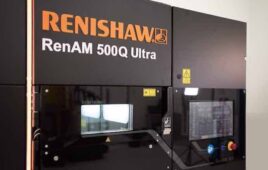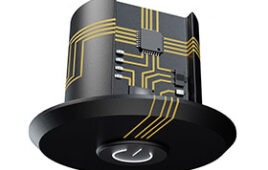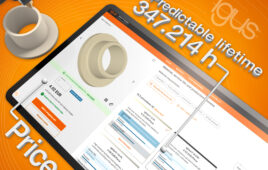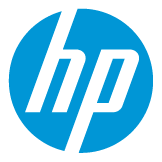Xaar, a developer of piezoelectric drop-on-demand inkjet technologies and industrial digital inkjet printheads, has appointed Professor Neil Hopkinson to a new role as Director of 3D Printing.
PD&D caught up with Professor Hopkinson to ask about his new position, the future of Xaar, and his thoughts on the industry.
PD&D: First of all, congratulations on joining Xaar.
Hopkinson: Thanks!
PD&D: How are things going so far?
Hopkinson: I’m loving my move into the private sector. Perhaps there’s a degree of “honeymoon period” about it, but I am really enjoying the dynamic of the working environment at Xaar. The company has a clear vision, and everyone I engage with appears to understand why and how we are going to achieve it.
PD&D: What type of experience do you have, and how will this knowledge strengthen Xaar operations?
Hopkinson: I have 20 years’ experience of industrial 3D printing (aka additive manufacturing – although it was known as rapid prototyping when I first dived into the technology of making 3D objects layer by layer). During this time, I have been employed in a number of very good academic institutions where I have worked closely with a large number of companies from SMEs to large multinationals. Aside from gaining in depth knowledge of industrial 3D printing technologies, I have learned how to pull together multi-partner and multi-disciplinary teams to successfully tackle substantial challenges. This is something I really enjoy about my work, and I am very pleased to note that one of the core values of Xaar is “collaboration.” On joining Xaar, the words “duck” and “water” spring to mind!
PD&D: What are some of the most significant changes you have noticed in the 3D printing industry?
Hopkinson: Over the last 20 years, 3D printing technology has made substantial advances in terms of quality of parts made, range of materials available, and the incredible diversity of applications it has served. However, the biggest single change I have observed is one that has been a consequence of these technical advances – it is the mindset of people in terms of how the technology can be used. For many years the technology was pigeon holed as one that is only suitable for prototyping. Those days are thankfully over. There is still an important role for 3D printing in the creation of prototypes, especially in high volume sectors such as fast moving consumer goods and automotive, but it is clear beyond any doubt now that the creation of final products, including products in high volumes, is where the majority of the future of 3D printing lies.
PD&D: Based on what you know of the industry today, where do you think it is heading in the next five years?
Hopkinson: 3D printed parts fly routinely on aircraft such as the Boeing Dreamliner. Some of the world’s best athletic footwear includes 3D printed parts. It is difficult to find a large company that is not involved in 3D printing in some way, be it in the public domain or behind closed doors. These things tell me that 3D printing is going to become routinely used in a very wide range of different industries and products in the coming years.
PD&D: What are some examples of how Xaar will have to think smarter to stay ahead of competition?
Hopkinson: Based on my answers above, the answer surely must be for Xaar to expand its activity in 3D printing! However, within 3D printing we will do well to focus on the core strength of our existing products – namely extremely robust, versatile, and reliable inkjet technology. I see these as key strengths for high volume, reliable, and versatile industrial 3D printing. Equally important is where we will not operate. Low cost desktop 3D printers have exploded in their adoption in recent years, but they do not use our kind of technology, and I do not see us operating in this, low cost, low volume space.
PD&D: Can you provide us with a brief description of some of your future products?
Hopkinson: As a supplier of core technology that is integrated into industrial equipment, people have most interest in the products that come from the machines that rely on our inkjet technology. To this end, I expect our technology to be at the core of the manufacture of products from aircraft parts to athletic footwear to fast moving consumer goods products.
PD&D: What is the most interesting project that has crossed your desk over the years?
Hopkinson: The one I’m working on now – to build an industrial 3D printing business within a company that is already a fine example of British manufacturing at its best.
PD&D: What keeps you up at night?
Hopkinson: Not much since my daughter learned to sleep through the night. I am one of those annoying people who drifts off pretty quickly and, even more annoyingly, bounces out of bed in the morning.
Filed Under: 3D printing • additive • stereolithography, Rapid prototyping




